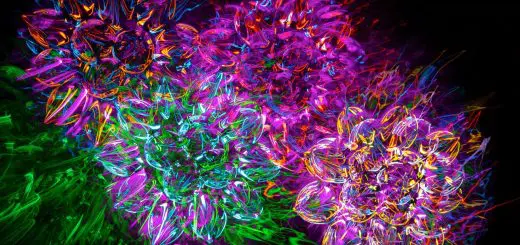What Are Migraines With Aura? Causes and Symptoms

Looking for more amazing products? Check out our online store and explore our collection here! Happy shopping!
Before diving in, please note: This post is for informational purposes only. If you’d like to know more about how we approach topics, feel free to check out our friendly Disclaimer Page.
Hey there, amazing readers! 
We’re committed to delivering quality posts, and your support (even just sticking around despite the ads) means everything to us. So, bear with us, and thanks for helping us keep the good vibes rolling. Now, on to the fun stuff!
TRANSLATE BUTTON AT THE END OF THE ARTICLE
A Quick Overview
Migraines with aura can feel like a storm brewing in your head.
If you’ve ever experienced one, you know it’s not just a headache; it’s a multisensory experience that can leave you feeling disoriented and exhausted.
In this article, we’ll take a deep dive into what migraines with aura are, their unique features, triggers, symptoms, and a whole lot more.
I’ll guide you through the maze of information, making it easier to understand what’s going on when a migraine strikes.
So grab your favorite comfy blanket, and let’s get started!
Understanding Migraines With Aura: An Overview
Migraines with aura are a specific type of migraine characterized by visual, sensory, or verbal disturbances that precede or accompany the headache phase.
Imagine watching a movie where the screen flickers and distorts just before the real drama unfolds—that’s what an aura feels like for many people.
Typically, an aura lasts anywhere from 20 minutes to an hour.
These migraines are more than a mere headache.
They can come with an array of symptoms that range from mild to severe and can significantly disrupt daily life.
The aura can manifest as flashing lights, zigzag lines, or even temporary loss of vision.
Although they affect a smaller percentage of migraine sufferers compared to those who don’t experience aura, understanding them is crucial for effective management.
Research shows that migraine with aura tends to affect women more than men.
It often begins in adolescence or early adulthood, but it can start at any age.
Knowing the signs can empower you to seek help and find treatments that work for you.
The Distinct Features of Migraines With Aura
So, what sets migraines with aura apart?
Well, it’s all in the intricacies of the experience.
Aura Symptoms: Common symptoms include visual disturbances like seeing bright spots, wavy lines, or temporary blindness.
Some people experience sensory changes, such as tingling in the hands or face.
Timing: An aura usually occurs just before the headache phase, but it can also occur during the headache, which can be quite confusing.
Duration: Unlike the headache, which can last for hours to days, the aura itself is relatively short-lived, typically less than an hour.
Variability: Each migraine with aura can be different.
While one episode may feature bright lights, another may present with numbness or speech difficulties.
Cognitive Effects: Some individuals report difficulty focusing or even temporary aphasia, where they struggle to find the right words.
Migraine Phases: The experience is categorized into four phases—prodrome, aura, headache, and postdrome.
Each offers its own set of symptoms and challenges.
Potential Triggers: Hormonal changes, stress, and certain foods are frequent culprits that can bring on a migraine with aura.
Personal Variances: What triggers one person might not affect another.
This variability makes managing migraines an individualized journey.
Family Connections: There’s often a family history tied to migraines with aura.
If your grandmother had them, you might be more likely to experience them too.
Seeking Treatment: Understanding your specific type of migraine can lead to more effective treatments and preventive strategies.
Armed with this knowledge, you can better navigate the turbulent waters of a migraine with aura.
What Triggers Migraines With Aura? A Closer Look
Ah, triggers—the infamous culprits that send us down the migraine rabbit hole.
Understanding what sets off migraines with aura can help us take proactive steps to avoid them.
Hormonal Changes: Women often report that their migraines coincide with their menstrual cycle.
Fluctuations in estrogen can be a major trigger.
Stress: Emotional stress is a common trigger.
That deadline or family drama?
It could lead to a migraine if you’re not careful.
Dietary Choices: Certain foods like aged cheeses, chocolate, and processed meats may lead to migraines.
Keep a food diary to pinpoint your triggers.
Caffeine: While some people find relief with caffeine, too much can lead to a rebound headache.
Environmental Changes: Bright lights, loud noises, and strong smells can trigger migraines.
Ever been blinded by the sun while driving?
That could be a precursor.
Sleep Patterns: Changes in sleep, whether too much or too little, can disrupt your body and trigger a migraine.
Medications: Some medications may have side effects or interactions that lead to migraines.
Always consult your doctor about new meds.
Weather Changes: Sudden temperature changes, humidity, or changes in barometric pressure can act as triggers.
Physical Exertion: Intense exercise, especially if you’re not used to it, can lead to migraines.
Dehydration: Not drinking enough water?
That can definitely lead to headaches!
Being aware of potential triggers allows you to strategize your lifestyle and prevent future migraines with aura.
Exploring Common Causes of Migraines With Aura
While triggers can start the migraine process, certain underlying factors can contribute to the likelihood of experiencing migraines with aura.
Here’s a closer look at some common causes:
Genetics: If your family has a history of migraines, chances are you might inherit the tendency too.
It’s like a family heirloom, but not one you want.
Serotonin Levels: Changes in serotonin, a neurotransmitter that helps regulate mood and pain, can influence migraines.
Imbalances may result in headaches.
Brain Activity: The aura is thought to be linked to a phenomenon called cortical spreading depression, where brain activity diminishes in areas responsible for processing sight and sensory information.
Vascular Changes: The dilation and constriction of blood vessels in the brain can trigger both the aura and headache phases.
Chronic Conditions: Conditions like anxiety, depression, and epilepsy often overlap with migraines, suggesting a shared biological pathway.
Age and Gender: Women are more affected, especially during their reproductive years, pointing to hormonal influences as key factors.
Sleep Disorders: Conditions like sleep apnea can contribute to the frequency and severity of migraines.
Nutritional Deficiencies: Deficiencies in vitamins, like magnesium, can lead to increased migraine occurrence.
Environmental Factors: Living in areas prone to extreme weather changes can also play a role.
Medication Overuse: Ironically, medication meant to relieve headaches can also cause them if used too frequently.
Understanding these causes can empower you to address the root issues and potentially reduce the frequency of your migraines with aura.
Recognizing the Symptoms of Migraines With Aura
When it comes to migraines with aura, being able to recognize the symptoms is half the battle.
Here’s a list of symptoms you might encounter:
Visual Disturbances: This can include flashes of light, blind spots, or geometric patterns.
Sensory Changes: Tingling or numbness in the face or extremities is a common sensation.
Speech Difficulties: Some might struggle to speak or find the right words, akin to having “word fog.”
Dizziness: A sensation of spinning or losing balance can accompany the aura.
Headache: After the aura, a pulsating headache typically follows, often on one side of the head.
Fatigue: Post-migraine fatigue can leave you feeling wiped out, like you’ve just run a marathon.
Nausea: Many experience nausea or an upset stomach during an attack.
Heightened Sensitivity: The world can feel overwhelming; sounds and lights can seem unbearable.
Irritability: The experience can leave you feeling moody or irritable.
Cognitive Impairment: A clouded mind can make it tough to focus or think clearly.
Being aware of these symptoms can help you recognize when a migraine with aura is approaching, giving you a chance to prepare or seek relief.
The Phases of Migraines: Aura, Headache, and More
Migraines don’t just appear out of nowhere; they have distinct phases that unfold, much like an unfolding story.
Here’s how the saga typically goes:
Prodrome: This is the early warning sign.
It can occur hours or even days before the aura hits.
Symptoms might include mood swings, food cravings, or fatigue.
Aura: The visual or sensory disturbances begin.
This phase usually lasts between 20 minutes to an hour.
Headache: After the aura, the headache kicks in.
It can be severe and may last from four hours to several days.
Postdrome: This is the recovery phase.
It can leave you feeling drained or foggy but usually signals the end of the migraine.
Variation: Not everyone will experience every phase, and the duration can vary widely from one individual to another.
Cyclical Nature: For some, these phases can repeat in a cyclical manner.
Understanding this cycle can aid in recognizing patterns and triggers.
Intermittent Symptoms: Some might experience symptoms that come and go, adding to the unpredictability.
Adjustment: Becoming familiar with your own phases can guide you in managing and mitigating symptoms.
Personal Experience: Everyone’s migraine journey is unique.
Documenting your phases can provide insights for yourself and healthcare providers.
Communication: Sharing your specific pattern with your doctor can help tailor treatment options that align with your experience.
Being informed about these phases can help you feel more in control and prepared for an impending migraine.
How Long Do Migraines With Aura Typically Last?
The duration of migraines with aura can vary immensely.
Generally speaking:
Aura Duration: Most aura phases last from 20 to 60 minutes.
Headache Duration: The headache that follows can last anywhere from four hours to three days.
Postdrome Duration: The recovery phase can last one to two days, though some may feel lingering effects.
Variation: Individual experiences differ widely.
Some may have quick, fleeting episodes, while others can endure protracted migraines.
Frequency: Some people experience migraines with aura only occasionally, while others may face multiple attacks within a month.
Tracking: Keeping a migraine diary can help track the duration and frequency of your episodes, making it easier to identify patterns.
Consultation: If your migraines last longer than the typical duration or seem to worsen, it’s wise to consult a healthcare professional.
Treatment Response: How well you respond to treatments can also influence how long a migraine lasts.
Lifestyle Impact: Factors like stress management and sleep can play a role in the length of your migraines.
Overall Health: Your general health condition can influence both the frequency and duration of your migraines.
Understanding the expected duration can help you manage your time and activities more effectively during an attack.
The Connection Between Genetics and Migraines With Aura
Did you know that genetics can play a significant role in your migraine experience?
Let’s break down this connection:
Inherited Traits: If a parent suffers from migraines with aura, there’s a higher chance their children will experience them too.
It’s like passing down a family recipe, but this one is less delightful.
Gene Variants: Research has identified specific gene variants linked to migraines.
These genetic markers can affect how your brain responds to pain.
Familial Hemiplegic Migraine: This rare type of migraine with aura can be directly inherited and can cause temporary paralysis.
Family History: Studies show that nearly 50% of people with migraines have a family history of the condition.
Potential Research: Ongoing research aims to understand the genetic basis of migraines better, which could lead to targeted therapies in the future.
Environmental Factors: While genetics plays a role, environmental factors can also trigger migraines, making it a complex interplay.
Personal Stories: Many people recount familial anecdotes—like how their grandmother had migraines with aura, and now it’s part of their story too.
Genetic Counseling: For those with a strong family history, genetic counseling may provide insights into risks and preventive measures.
Understanding Patterns: Knowing your family history can help you communicate effectively with healthcare providers.
Empowerment Through Knowledge: Understanding the genetic links can empower you to take proactive steps in managing your health.
The genetic connection can provide a clearer picture of your migraine experience and how it might be managed.
Lifestyle Factors That May Influence Migraines With Aura
Lifestyle choices can make a world of difference in managing migraines with aura.
Here’s how:
Diet: Eating regularly and avoiding trigger foods can help maintain a balanced system.
Stay hydrated—dehydration is a known trigger.
Routine: Keeping a consistent sleep schedule is key.
Too much or too little sleep can provoke migraines.
Exercise: Regular physical activity is important, but too much intensity can backfire.
Find what works for you.
Stress Management: Techniques like yoga, meditation, or deep-breathing exercises can help alleviate stress, reducing the likelihood of migraines.
Caffeine: Moderation is essential.
A little can help, but too much can lead to headaches.
Body Posture: Maintaining good posture, especially if you’re working long hours at a desk, can help minimize tension headaches.
Screen Time: Prolonged exposure to screens can lead to visual strain and trigger migraines.
Take breaks every hour to rest your eyes.
Avoiding Skipping Meals: Regular meals can help stabilize blood sugar levels, potentially reducing the risk of migraines.
Hygiene: Keep track of your menstrual cycle.
Being aware can help you prepare, especially if hormonal changes are a trigger.
Social Support: Sharing your experience with friends and family can make a difference.
It helps to talk about what you’re going through.
Adopting lifestyle changes can make a significant impact on the frequency and severity of migraines with aura.
Effective Treatments for Migraines With Aura Relief
When it comes to treating migraines with aura, there’s a range of options to explore.
Here’s what might help:
Medications: Over-the-counter options like ibuprofen or acetaminophen can alleviate pain, while prescription medications may target the migraine specifically.
Triptans: These are often prescribed for migraine relief.
They work by constricting blood vessels and blocking pain pathways in the brain.
Preventive Medications: If you experience frequent migraines, your doctor may recommend medications aimed at preventing attacks altogether.
Lifestyle Adjustments: As we discussed earlier, lifestyle changes can help significantly reduce the frequency of migraines.
Alternative Therapies: Techniques like acupuncture or chiropractic care have been reported to provide relief for some individuals.
Biofeedback: This technique teaches you to control physical functions, potentially reducing the intensity and frequency of migraines.
Cognitive Behavioral Therapy (CBT): This can help you manage stress, which is a common trigger for migraines.
Supplements: Some people find relief with magnesium or riboflavin supplements, but consult a healthcare provider before starting any new regimen.
Essential Oils: Lavender and peppermint oils have been known to provide soothing effects when inhaled or applied topically.
Stay Informed: Keeping track of your migraines and their triggers can empower you to find the most effective treatment options for yourself.
Being proactive and understanding the range of treatments available can help you find relief from those pesky migraines.
Managing Migraines: Tips for Everyday Life
Living with migraines with aura doesn’t have to mean living in fear.
Here are some strategies to manage them effectively:
Keep a Journal: Track your migraines, noting their frequency, triggers, and duration.
This can help identify patterns.
Have a Plan: If you feel an aura coming on, have a go-to plan in place for what you’ll do.
This might include resting in a dark room or taking medication.
Build a Support System: Share your experiences with friends or family.
Having a buddy system can make the journey less isolating.
Stay Educated: Knowledge is power.
The more you know about your migraines, the better equipped you’ll be to handle them.
Practice Relaxation Techniques: Incorporate techniques like deep breathing or meditation into your daily routine.
Limit Triggers: Be mindful of your environment and try to limit exposure to known triggers.
Set Realistic Expectations: Understand that some days may be tougher than others, and that’s okay.
Stay Flexible: Life will throw curveballs.
Being adaptable can help you manage unexpected migraine days.
Celebrate Small Wins: Acknowledge the improvements you make in managing your migraines, no matter how small.
Seek Professional Help: Don’t hesitate to consult a healthcare professional if your migraines become overwhelming.
They can provide support and additional treatment options.
Taking these steps can empower you to reclaim your life from migraines with aura.
Seeking Medical Help: When to Consult a Doctor
Sometimes, self-care and lifestyle changes aren’t enough, and that’s okay!
Here are some signs that it might be time to consult a healthcare professional:
Frequency: If your migraines with aura are happening more frequently than usual, it’s a sign to seek help.
Severity: If the pain becomes unbearable or doesn’t respond to over-the-counter medications, consult a doctor.
Changes in Symptoms: If your migraine symptoms change suddenly or become more severe, it’s best to have them checked out.
New Symptoms: Experiencing new symptoms during a migraine, like severe confusion or loss of consciousness, requires immediate attention.
Worsening Pattern: If your migraines begin to cluster together or become more intense over time, it’s time to get a professional opinion.
Impact on Daily Life: If migraines are significantly hindered your ability to work or participate in activities you love, don’t hesitate to seek help.
Medication Concerns: If you’re using over-the-counter medications more than twice a week for migraines, you may need a different approach.
Questions: If you have questions about your condition or treatment options, a healthcare provider can offer valuable guidance.
Family History: If there’s a strong family history of migraines, discussing this with a doctor can lead to proactive strategies.
Mental Health: If you’re feeling overwhelmed by your migraines, seeking mental health support can be beneficial.
Taking the step to seek medical advice can lead to better management and understanding of your migraines with aura.
Conclusion
Migraines with aura can be a challenging and often overwhelming experience.
However, understanding your symptoms, recognizing triggers, and knowing when to seek help can make a world of difference.
By taking control of your health and employing effective management strategies, you can navigate through the ups and downs of migraines with greater ease.
Remember, you are not alone in this journey.
Support is available, and there are ways to reclaim your life.
So embrace your unique story, and let it be part of your journey toward brighter days ahead!

The Enlightenment Journey is a remarkable collection of writings authored by a distinguished group of experts in the fields of spirituality, new age, and esoteric knowledge.
This anthology features a diverse assembly of well-experienced authors who bring their profound insights and credible perspectives to the forefront.
Each contributor possesses a wealth of knowledge and wisdom, making them authorities in their respective domains.
Together, they offer readers a transformative journey into the realms of spiritual growth, self-discovery, and esoteric enlightenment.
The Enlightenment Journey is a testament to the collective expertise of these luminaries, providing readers with a rich tapestry of ideas and information to illuminate their spiritual path.
Our Diverse Expertise
While our primary focus is on spirituality and esotericism, we are equally passionate about exploring a wide range of other topics and niches 

To ensure we provide the most accurate and valuable insights, we collaborate with trusted experts in their respective domains 
Our blog originally focused on spirituality and metaphysics, but we’ve since expanded to cover a wide range of niches. Don’t worry—we continue to publish a lot of articles on spirituality! Frequently visit our blog to explore our diverse content and stay tuned for more insightful reads.
Hey there, amazing reader! 
Check out our store here and take a peek at some of our featured products below! Thanks for being awesome!













